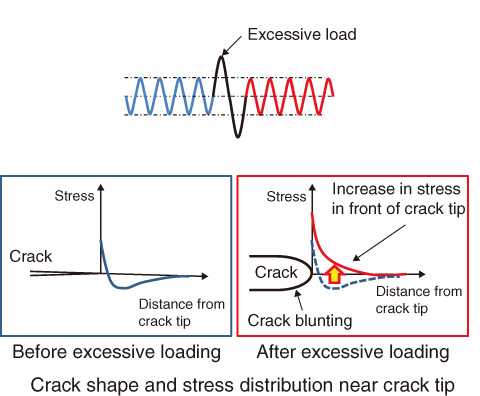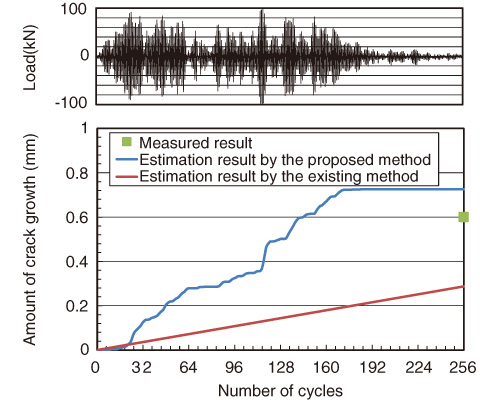
Fig.6-5 Stress distribution shift and crack blunting at crack tip under large seismic loading

Fig.6-6 Amount of crack growth under simulated seismic load
Accurately predicting crack growth is important for evaluating plant safety. The existing method of evaluating crack growth under constant-amplitude cyclic loading was based on the small-scale yielding (SSY) condition. The objective of this study is to propose a crack growth evaluation method in pipes beyond the SSY condition under seismic loading.
We demonstrated that the crack growth rate beyond the SSY condition and during cyclic loading can be evaluated using the elastic-plastic fracture mechanics parameter (J-integral). Crack growth experiments using cyclic loads with excessive tensile and compressive loads showed the acceleration and retardation effects of the excessive load on crack growth. This indicates that deformation at the crack tip and the change in the stress distribution in front of the crack tip play a key part in crack growth under large seismic loading. Finite element method analyses revealed that the effect of acceleration and retardation on crack growth is attributed to an increase in the stress in front of the crack tip from the excessive compressive load and crack blunting from the excessive tensile load, respectively, as schematically shown in Fig.6-5. A crack growth evaluation method based on these features has been proposed in which ΔJ is calculated in each cycle to estimate the amount of crack growth.
The method of evaluating the crack growth in reactor piping subjected to seismic loading beyond the SSY condition has been validated by piping crack growth tests using a simulated seismic load. Fig.6-6 shows the obtained amount of crack growth (![]() ) together with that evaluated by the present and existing methods. The proposed method can accurately estimate the amount of crack growth given by the test result because the method considers the condition beyond SSY and the crack growth under individual loading of irregular amplitude, unlike the existing method. The validity of the proposed method was confirmed for different materials and loading patterns.
) together with that evaluated by the present and existing methods. The proposed method can accurately estimate the amount of crack growth given by the test result because the method considers the condition beyond SSY and the crack growth under individual loading of irregular amplitude, unlike the existing method. The validity of the proposed method was confirmed for different materials and loading patterns.
The present study was sponsored by the Japan Nuclear Energy Safety Organization (JNES).